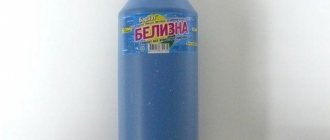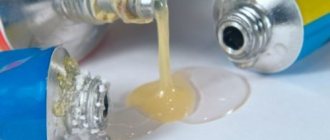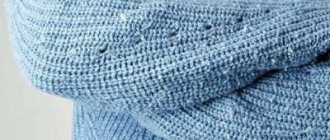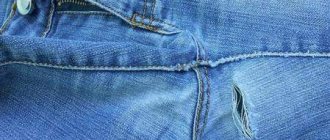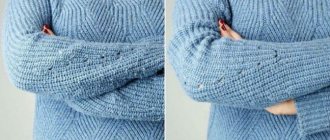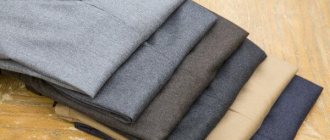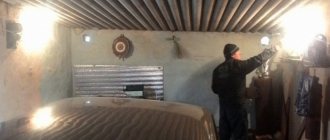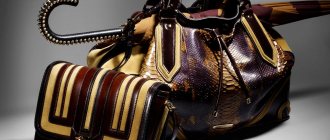When you buy new clothes, you expect to wear them for a long time. But a high price, excellent appearance and excellent style do not guarantee long service. The reason for unsuitability may be trivial - the appearance of pellets.
It becomes even more offensive if the pills appear on your favorite clothes, which are suitable for different occasions. Some people try to remove them manually, tearing them off one by one, but we will tell you how to get rid of pills on clothes using devices. This way you will save time and prevent this problem from occurring in the future.
Why do pills appear on clothes?
When you wear clothes, wash them, or throw a backpack strap over your shoulder, small lumps of tangled fibers appear on things due to friction.
The longer the pile and the lower the density of the fabric, the more pilling there will be. The most problematic in this regard are wool (especially large knits), flannel and almost any low-quality fabric. It is impossible to avoid the appearance of pellets, but it is quite possible to remove them. Clothes will look much neater after such cleaning. We have selected the simplest and most effective home methods. But if you don’t want to take care of your clothes yourself, then you can turn to professionals. A good dry cleaner will not only wash the item, but also remove the pellets.
Reasons for appearance
More often, pellets appear on soft, loose fabrics with pile or admixtures of polyester, acrylic or nylon fibers. They are located in places of constant friction or interaction with foreign objects. For example, a bag or a backpack.
The reasons may be:
Incorrect care . The washing program, temperature and detergent do not match the type of fabric.- Mixed composition of the material . Susceptible to rolling in tandem synthetic and natural fibers.
- Density and structure of fabric . Threads of medium and weak twist, weak weaving, as a result - a loose fabric that quickly loses its appearance.
Before blaming the manufacturer, carefully study the composition and recommendations on the product label. It will help you find the cause of the problem.
How to care for clothes to prevent pilling from appearing longer
Since friction is to blame for the appearance of pellets, it should be avoided if possible. Here's what to do.
- Follow the washing cycle indicated on the clothing. Before throwing things into the machine, turn them inside out so that their front sides rub less against each other and against the drum.
- Wash woolen items in a special mesh.
- Use laundry conditioner. It softens the fibers and they straighten out.
- Don’t get carried away with machine drying: it also creates excess friction.
- Be careful with bags. Any straps and backpacks damage clothing in the shoulder area. If you don’t like to carry your bag in your hand, choose wide soft straps.
- Keep your hands in the pockets of your woolen coat as little as possible, otherwise the surface around the pockets and around the cuffs will become matted.
- Do not rub the item unnecessarily. Do not wash out stains - it is better to use a stain remover.
- Pay attention to your choice of clothing. High-quality fabrics are less prone to pilling.
- Be careful with Velcro fasteners: they leave snags on knitted clothing and damage the fibers, which can later become matted.
How can you quickly remove lumps from fabric at home?
A quick response to the appearance of rolled fibers makes it easier to deal with them . It is necessary to regularly inspect items; special attention should be paid to items made of wool and knitwear. There are several ways to remove pellets, but not all of them are safe for delicate fabrics.
Stationery tape
The adhesive surface effectively removes pet hair from things, and it can also handle small pellets.
How to use:
- Lay the fabric out on a flat surface.
- Cut a piece of tape.
- Glue it onto the damaged area.
- Rip it off in one sharp movement.
- Repeat if necessary.
The method is not suitable for large damage to the tissue structure.
Shaver
The device is dangerous for the owner’s things and hands; care should be taken when working with them. The method is effective for accessories (hats, gloves) and hosiery.
To remove rolled fibers you need to:
- pull the material;
- take a used machine (should not be too sharp);
- move it along the damaged area from bottom to top.
When moving the tool over the product, it is necessary to tighten the surface being worked well each time. It is not recommended to cut off pellets with a razor from large items (dresses, cardigans) and knitwear with pile (containing angora, mohair).
Toothbrush
Don't throw away your used toothbrush; it will help remove pellets on delicate fabrics.
Instructions for use:
- Place the product on a hard surface.
- Take a brush with soft bristles.
- Comb out the rolled particles along the fibers.
- Pour water with a temperature of no more than 30 degrees into the basin.
- Add table vinegar.
- Rinse the item in the solution.
- Dry flat on a terry towel.
Treatment with a vinegar solution after cleaning will straighten the fibers and restore their softness and fluffiness. Drying must be done away from direct ultraviolet rays and electrical appliances, otherwise the product will become hard.
Comb
The method is suitable for removing large pellets from large items or small accessories made of thick woolen thread.
To do this you need:
- take a hair comb with fine, frequent teeth;
- treat the damaged surface with it in the direction of the fibers;
- collect the combed particles from the device.
When using a comb, handle knitwear with a comb so as not to catch the thread with the teeth and do not tighten it.
Abrasive materials
To get rid of the problem, you will need:
- fine-grained sandpaper (sandpaper),
- a hard sponge (new and dry) or a piece of pumice.
Abrasives are effective for removing rolled areas on lint-free materials. It is enough to lay out the item and use gentle movements to clean off all excess.
Sponge, sandpaper and pumice can be replaced with bread crumbs, the recipe for which is known to every housewife.
What not to do?
Not all methods are effective and universal for different fabrics. Not recommended:
- Cutting rolled fibers from very thin material will cause damage.
- Remove pellets with abrasive materials from products subject to deformation.
- Remove damaged areas from hosiery with a toothbrush; it will roll the fibers over the surface and ruin the item.
- Use stationery tape and a sticky roller for fabrics with long pile.
- Plucking the pellets with tweezers or your hands can pull the thread out of the fabric to the surface and aggravate the problem.
Before you begin, you need to determine which cleaning method is suitable for this material.
Drying
Delicate items require more than just careful washing. They need to be dried properly. When trying to dry something quickly, do not forget about safety precautions and the specifics of the fabric.
Rules:
- Do not dry near open fire.
- Do not hang near heating devices or near radiators. Accelerated drying leads to deformation.
- Limit exposure to ultraviolet radiation. The fabric shrinks and fades.
- Dry knitted clothes on a towel. When it gets wet, change it to something else.
- You can’t hang it on a clothesline, it will stretch.
- You can use hangers for sweaters and dresses. The trempel must match the size of the item, otherwise the product will be deformed.
In an emergency, you can use an electric dryer and hang things next to the oven that is on. It is allowed to use a hairdryer, holding it at a distance of 20 cm from the item.
Last resort - dry cleaning
The most effective and efficient way to quickly and efficiently remove small balls. Of course, it is irrational to hand over everyday pants or a jacket, since dry cleaning services require significant financial costs. But it is best to entrust an expensive coat or blouse to specialists.
At the dry cleaners, they will not only remove knots from the item, but also wash and iron it at the client’s request. Here, clothes can be treated with special solutions that prevent the appearance of glomeruli. The procedure ensures the durability of the product.
Do not forget that it is best to use the services of a trusted organization with a good reputation.
Features of processing various things
In most cases, the problem can only be solved by mechanical action on the material and the correct choice of device. Cheat sheet for removing rolled fibers:
| Fabric type | Properties | Acceptable means |
| Woolen | Pile present, deformed | Scissors, toothbrush |
| Knitwear | Highly stretchable | Blade, razor, toothbrush, abrasive side of dish sponge |
| Dense | Does not change shape, is less likely to be damaged | Scissors, razor, tape, brush |
For the listed types of fabric, an effective and safe method is a machine to remove pellets.
This article will tell you how to remove pills from a sweater, this article from a sweater, and this article from trousers.
From socks
The small area of the product allows you to experiment with various devices . The pellets can be carefully cut off with a razor or a machine with a small grid diameter. If the socks are made of thick yarn, they must be combed out with a comb or removed with nail scissors.
With a coat
The choice of method to solve the problem directly depends on the structure of the material. Nail scissors are often effective, but the process requires effort and time. Dense matter can be cleaned with fine-grained sandpaper or pumice.
If we are talking about an expensive wardrobe item, the best option to get rid of pills is to entrust the product to dry cleaning professionals.
From a T-shirt
Rolled fibers on a T-shirt can be removed using an industrial product. Gel powders Perwoll or Laska from the “Care and Restoration” series will cope with the problem in 2-3 washes .
Their regular use will prevent the material from pilling in the future, restore the damaged fiber structure and preserve the color of the product for a long time.
From bed linen
Pills appear on sets made of fabrics with the addition of synthetic fibers (acrylic, nylon, polyester).
You can fight them using any of the methods listed above ; abrasives and brushes, scissors and a special machine will do. To avoid a labor-intensive process, you must follow the manufacturer's care recommendations on the label.
You shouldn't skimp on bed linen. Trusted product manufacturers are Russia, Türkiye, China and European countries. The best composition is natural fibers of cotton, linen, silk.
From a sweatshirt
Small rolled areas of the product can be tidied up using tape . If the method turns out to be ineffective, you will have to cut it off with nail scissors, a blade or a razor. Do not use a new machine for cleaning; it may damage the structure of the fabric.
With a dress and a skirt
Abrasive materials: pumice or sandpaper will help remove pellets from dense fabrics.
Products made from drape, wool or jeans can be processed with a blade or machine. It is recommended to clean products with bristles with a toothbrush.
To quickly fix a problem with a large product, it is better to use a special machine . Instructions for using the devices are described above.
From the mattress
It is difficult to deal with the problem manually over a large area. The adhesive tape will be ineffective; it will take more than one hour to clean it off with an abrasive. The best way is a machine that cuts off the rolled fibers. But the effect will be temporary. To prevent the recurrence of pilling, you must use a mattress cover.
From the sofa
Rolled areas of furniture upholstery should be removed carefully , otherwise expensive furniture can be damaged. Often, a machine, a blade, or even a knife are used for cleaning at home.
The method is unsafe; if you use force with the blade, you can damage the fabric.
If the housewife is not sure that she can accurately solve the problem without additional costs for replacing the upholstery or the sofa itself, she should seek help from professionals.
From the ceiling in a car
After poor-quality chemical cleaning of the interior, there is a risk of a “shaggy ceiling” effect. Pills on upholstery fabric can be removed with a machine, but the process will take a lot of time . The easiest and fastest way is a machine for cutting rolled fibers.
You cannot remove lumps with a brush; this will aggravate the problem. If the interior ceiling is severely damaged, the only way is to have the fabric reupholstered professionally.
How to remove with a removal machine?
A specially designed machine will help you quickly and effectively get rid of traces of rolling on your favorite things.
The device is equipped with:
- a fan for sucking pellets into the grill;
- stainless steel blades for removing them from the surface of the fabric;
- container in which cut particles are collected.
Mode of application:
- Insert batteries.
- Enable using button.
- Work the surface of the product in a circular motion.
For knitwear with pile, you need a device with the ability to adjust the height of the blade. A review of pellet removal machines is presented in this article.
